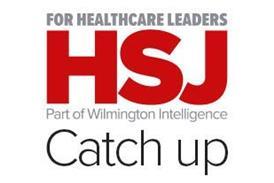America has fired the starting gun for sweeping changes to medical device procurement across the globe, with the Food and Drugs Administration announcing its mandate that all devices should have Unique Device Identifiers (UDIs).
With the US being such a huge market, this move is going to have dramatic effects across the medical device industry and a knock-on impact on healthcare providers.
It is a good thing too, as European and UK regulatory legislation is on the horizon, which means that the groundwork being put in now to meet the requirements of the FDA’s regulation will stand the UK and global industry in good stead for the future.
What are the benefits of global UDI regulation?
One of the primary benefits of a global, cross-sector, UDI mandate is in protecting patients from misidentified products - where poor illegible manual labelling systems or simple human error can result in massive risks to patient safety.
A global set of regulations will mean that hospitals and clinicians will have access to a reliable source of information about medical devices from their manufacturers, leading to fewer administrative errors affecting patient care.
Not only this, but there will be a huge positive impact on the supply chain and stock control systems employed by hospitals to ensure that they have adequate supplies of a device at any one time.
What about the NHS?
The arrival of standardised UDIs, in the form of widely used coding systems such as Global Trade Item Number, will be music to the ears of many NHS trusts’ procurement departments. GTINs are unique codes used to identify products and services between organisations. Implementing UDI technology will see the coming together of the NHS and the medical device industry to work collaboratively to solve their problems together.
The British Healthcare Trades Association is setting up a working group to achieve this, while the Association of British Healthcare Industries is running joint events with GS1 UK to prepare its members for the change.
The potential savings will be absolutely staggering, but it will take time to implement. Major IT suppliers will need to ensure that their systems are compatible with the UDI tracking mechanisms that NHS trusts will require. This could take some time in the industry itself, with systems from back-office procurement to frontline clinical systems having to support the codes and link together.
One of the issues that the NHS finds itself facing is that there will be a need for significant change and investment in IT infrastructure, replacing 30 years of IT systems which are not necessarily compatible with each other or new standards. There is no one size fits all solution to the impending migration, as NHS trusts depend on a specific combination of systems which need to work together. However in the long run it will be worth the investment for the NHS as it is a vital area of development which will save both money and lives.
Who is using this now?
One of the big issues facing many NHS trusts is stock control. A good example of how this can be dealt with can be seen in the work done at Leeds Teaching Hospital, which has saved over half a million pounds in a single department alone by implementing a GS1 standards-based automated stock control system. Over the course of three years, Leeds Teaching Hospital reduced surplus stock levels by £570,000 while simultaneously improving service levels to 98 per cent.
The implementation allowed frontline doctors and nurses to spend more time with patients and less time finding and ordering basic equipment or even manual taking stock measurements. With full visibility of all orders and stock coming in, the trust’s supplies team can see what items have been delivered to which ward.
Not only this, but the hospital’s receipting invoice disputes have dropped from a fifth of all invoices to just two per cent, saving a huge amount of administrative resources.
If the model demonstrated by Leeds Teaching Hospital is followed in all departments in all hospitals across the UK, hundreds of millions of pounds will be freed up to invest in better patient care, rather than tied up in admin and procurement.
When can we expect these regulations here?
Europe is keeping a close eye on the FDA’s 120 day consultation period and it is likely that we will see a similar piece of legislation come through shortly after the US regulator’s UDI legislation comes into force. The resulting European directive would then be passed down from EU to member states through a series of delegated acts, ensuring that all member states adhere to the regulations.
Barring any major hold-ups, we will probably see Class III medical devices, such as pacemakers and heart valves, carrying UDIs in the UK by the end of 2013, and Class IIb Devices, such as surgical lasers and ventilators, following in 2014/15. This might seem unusually fast, but with the industry already behind it, these changes are being planned for by the major manufacturers.
What’s next?
Over the next six to twelve months we will see the drive for identifiers picking up around the world and NHS suppliers will start to implement these on the devices that they sell. And with this, we will start to see timescales and targets for deployment in the NHS as well as an indication of the kinds of savings that will be expected. Through the use of joined up systems using identifiers for tracking and monitoring across a hospital, trusts can make huge savings without cuts to frontline services. Increased efficiency and increased savings in procurement and stock management will see more money to invest in services and improved levels of care at the point of treatment.
Roger Lamb is healthcare sector manager for GS1 UK

























No comments yet